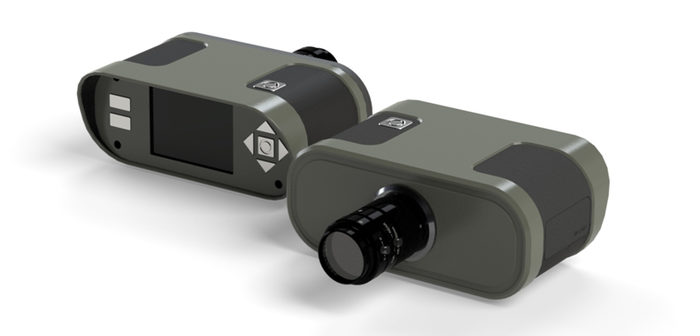Multi-award winning product consultancy Wideblue has designed a low cost camera which will be used in agriculture to test for early onset disease in various crops including potatoes and soft fruits.
The Hyperspectral Crop Camera (HCC), costing under £1000, is capable of taking images across a wide continuous spectrum of wavelengths of light, In the case of the HCC prototype this was in the visible wavelength region. However, the same technology within device could also be applied to non-visible wavelengths such as short wave infrared.
Traditionally, hyperspectral cameras are very expensive and bulky due to the nature of the complex optics and electronics within the device. To significantly reduce the cost yet maintain the same performance Wideblue took an innovative approach. The device uses a Linear Variable Filter (LVF) rather than a traditional diffraction grating (similar to a prism). The LVF is a narrowband filter that allows light to pass through it linearly along its length. By moving this lightweight component rapidly across a standard image sensor (camera) the HCC can capture images in real-time across the full visible spectrum of light, one wavelength at a time. This is extremely useful for imaging crops as this can highlight drought stress or disease , these are often difficult to detect with the human eye since the eye detects all visible wavelengths of light simultaneously. Equipped with a feature extraction and classification algorithm, the proposed system can be used to determine potato plant health, for example, with ∼88%∼88% accuracy. This algorithm is also capable of species identification and is demonstrated as being capable of differentiating between crops such as rocket, lettuce, and spinach.
Russell Overend, managing director, Wideblue said “The HCC demonstrates that by applying alternative technologies to new areas of research, in this case agricultural imaging, a low cost solution can be developed We have lowered the cost by a factor of 10 but the device offers comparable performance to traditional machines.”
He added: “This market disruption model is being applied by Wideblue to a variety of industries including medical, scientific and satellite applications.”
Led by Wideblue the project was a collaboration between Wideblue and University of Strathclyde, University of the West of Scotland, the James Hutton Institute and Galloway and Macleod. The project was funded by Innovate UK.




